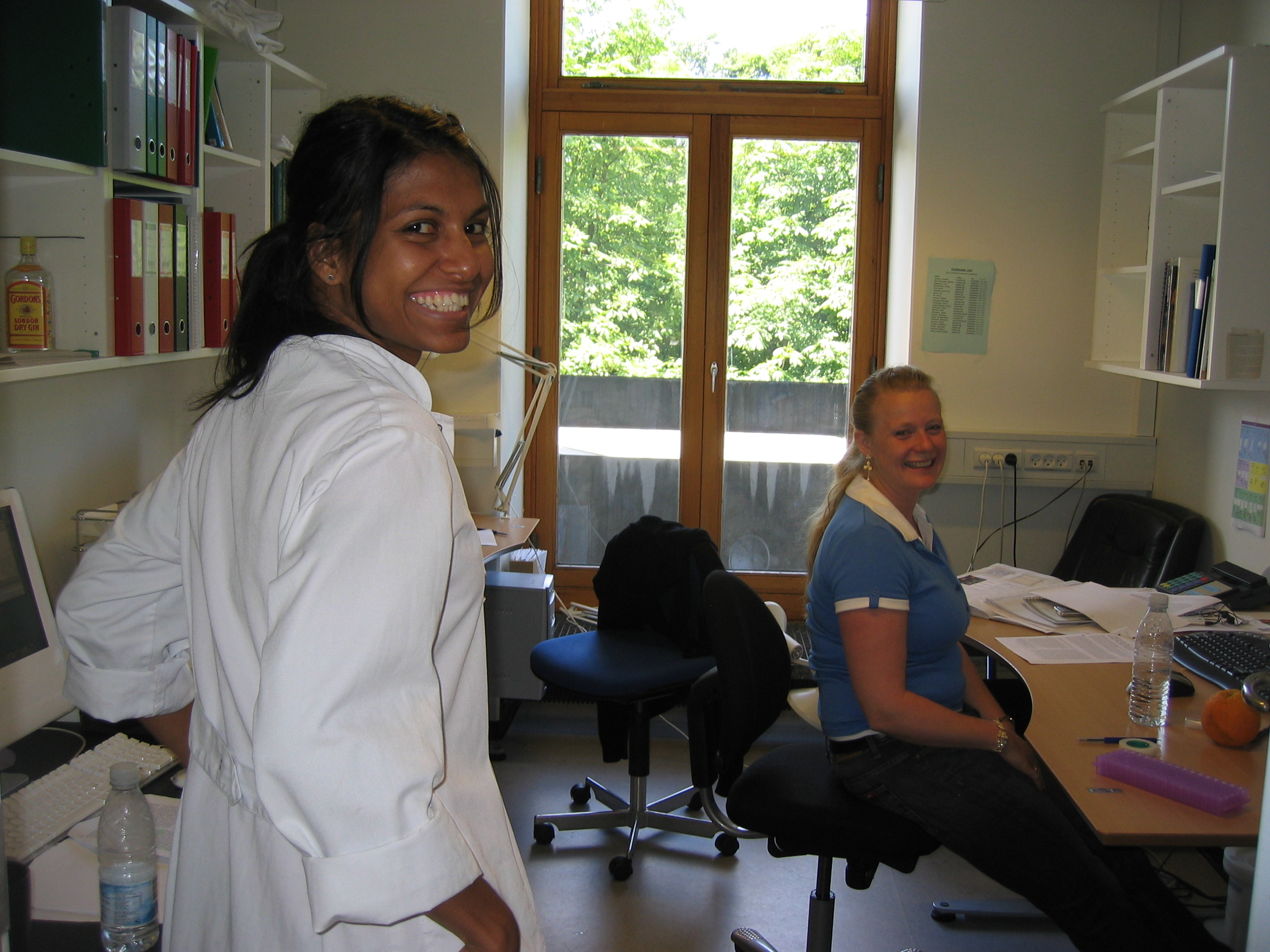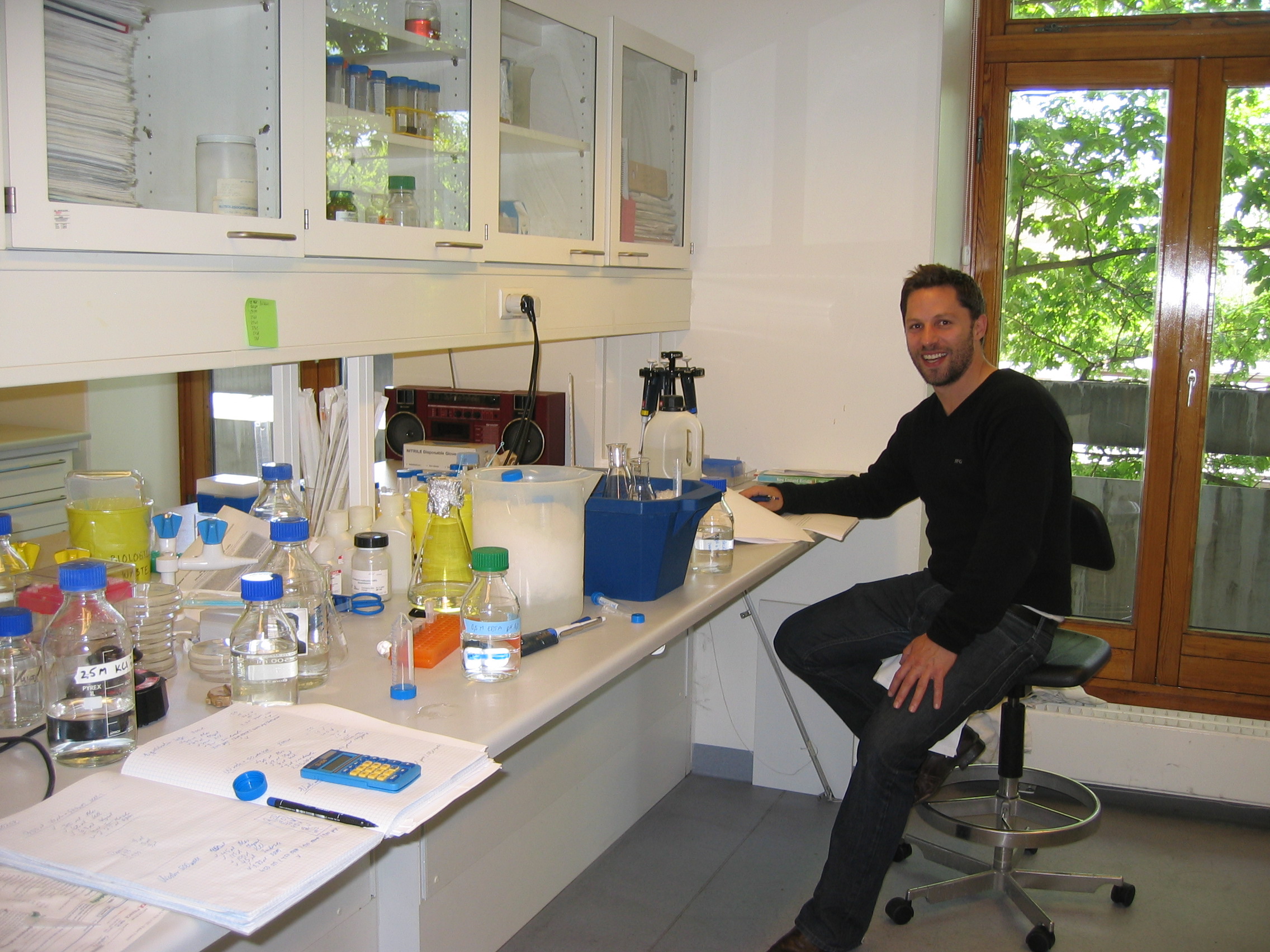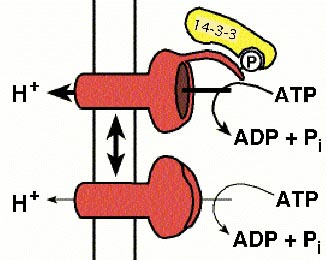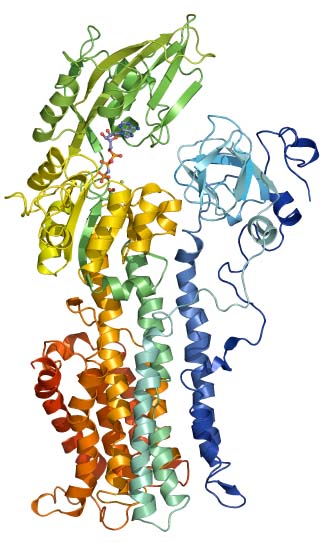
|
|
|
|
|
| Laboratory members:
|
|
Heavy metal pump subgroup
Lene Irene Olsen (Postdoc)
Jeppe Thulin Østerberg (PhD student)
P5 ATPase subgroup
Henrik Holen (Postdoc)
Danny Mollerup Sørensen (Postdoc)
Awais Nisar (master student)
Proton pump physiology subgroup
Robert Daniel Hoffmann (Postdoc)
Chukwuebuka Wincent Ezike (research assistant)
Proton pump structure/function subgroup
Jesper Torbøl Pedersen (Postdoc)
Janus Falhof (PhD student)
Students and postdoctoral researchers who previously worked in the laboratory and who have obtained permanent positions elsewhere include:
University:
Rosa Lopez-Marques, postdoc 2005-09, now Assoc. Prof., Univ. Copenhagen
Morten Schiøtt, PhD 2005, now Assoc. Prof., Univ. Copenhagen
Teis E. Søndergaard, MSc 2004, now Assoc. Prof., Aalborg Univ.
Thomas P. Jahn, postdoc 1997-2000, prev. Assoc. Prof., Univ. Copenhagen
Eric Gomes, postdoc 1997-99, now Full Professor, Universite de Bordeaux
Kees Venema, postdoc 1994-99, now Assoc. Prof., Spanish National Research Council
Anja Thoe Fuglsang, PhD 1999, now Assoc. Prof., Univ. Copenhagen
Markus Geisler, postdoc 1996-98, now Assoc. Prof., University of Fribourg
Kristian Axelsen, PhD 1998, now Scientific Biocurator, Swiss Institute of Bioinformatics
Maria Christina Bonza, postdoc 1998, now Assoc. Prof., Universita degli Studi di Milano
Lorenzo Camoni, postdoc 1998, now Assoc. Prof., University of Rome Tor Vergata
Jose Roman Perez-Castiñeira, postdoc 1995, now Assoc. Prof., Universidad de Sevilla
Birgitte Regenberg, M.Sc. 1992-94, now Assoc. Prof., Univ. Copenhagen
Industry:
Lone Bækgaard, PhD 2005, now Sr Department Manager, Novozymes North America Inc.
Kathrine Bych, PhD 2005, now Head of Strain Development, Glycom A/S
Marie Eskling, postdoc 1999-2000, now CMC Senior Outsourcing Manager, Novo Nordisk A/S
Lone Baunsgaard, PhD 1997, now Science Manager and Project Leader at Novozymes A/S
Frank Lanfermeijer, postdoc 1993-96, now Senior Scientist, Syngenta Seeds
Birgitte Andersen, postdoc 1997-98, now Science Manager, Novozymes A/S
Public administration:
Staffan Fraysse, postdoc 2005, now Project Officer, European Commission
Mia Kyed Jakobsen, PhD 2004, now Head of Section, Ministry of Higher Education and Science, Denmark
Gitte Frandsen, postdoc 2001, now Communications Coordinator, University of Copenhagen
(last updated 30-08-2016)
See also former group members
|
| |
Michael Broberg Palmgren
PhD 1990 University of Lund, Sweden.
Postdoctoral work at the European Molecular Biology Laboratory, Heidelberg
Assistant Professor 1994 at the Royal Veterinary and Agricultural University (KVL)
Associate Professor 1996 at University of Copenhagen
Professor at KVL 1998-2006.
Professor at University of Copenhagen (formerly KVL) since 2007.
|
| |


|
|
|
|
|
|
|
| Research:
|
|
We are interested in P-type ATPases in plants. P-type ATPases are biological pumps fuelled by ATP. They catalyze the transport of a solute, typically a cation, from one side of a lipid bilayer membrane to the other. The P in P-type indicates that these pumps form a phosphorylated reaction cycle intermediate. In plants, there are different P-type pumps pumping protons, calcium, heavy metals and perhaps also phospholipids.
P-type ATPases are involved in a number of essential processes such as the energization of nutrient uptake, heavy metal transport, endocytosis, exocytosis, stress tolerance and acclimatization to cold temperatures.
It appears that many P-type ATPases are regulated by terminal autoinhibitory domains that bind regulatory proteins. Thus, plasma membrane H+-ATPases are recognized and activated by 14-3-3 proteins that bind to these pumps following phosphorylation of the penultimute threonine residue in a C-terminal regulatory domain of H+-ATPase. Vacuolar membrane Ca2+-ATPases are recognized by calmodulin in the presence of calcium, and the calcium/calmodulin complex binds to the N-terminus of Ca2+-ATPase that in this pump serve as a regulatory domain.
We study regulation of plant P-type ATPases mainly using a yeast based expression system. One of our goals is to build up complete signal transduction pathways regulation these plant pumps in this heterologous fungal host.
We study the physiological function of the various pumps by studying the effect of knocking out single one by one in plants. Alternatively, we generate transgenic plants in which expression levels of the corresponding genes have been altered.
The 3D structure of plasma membrane H+-ATPase was solved in collaboration with Poul Nissen's group in Aarhus (also part of PUMPKIN). This has resulted in vast amounts of new informaton on how this single subunit enzyme can catalyze the transport of a charged substrate through the membrane and against an electrical and a chemical gradient. In order to obtain the structure of other P-type pumps, we purifie them for crystallization purposes in collaboration with a number of other laboratories.
|
| |

Regulation of plasma membrane H+-ATPase by 14-3-3 protein
|
| |

Structure of the plasma membrane H+-ATPase AHA2
|
|
|
| Contact: |
| |
| Address |
Palmgren Laboratory
Transport Biology Section
Department of Plant and Environmental Sciences
Faculty of Science
University of Copenhagen
Thorvaldsensvej 40
DK-1871 Frederiksberg C
DENMARK |
| Telephone |
+45 2398 8444 |
E-mail
|
|
|
|
back to top
|
|


